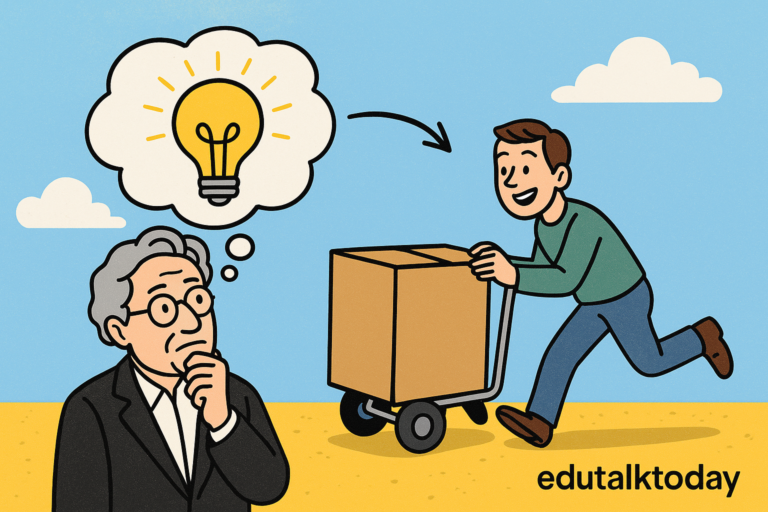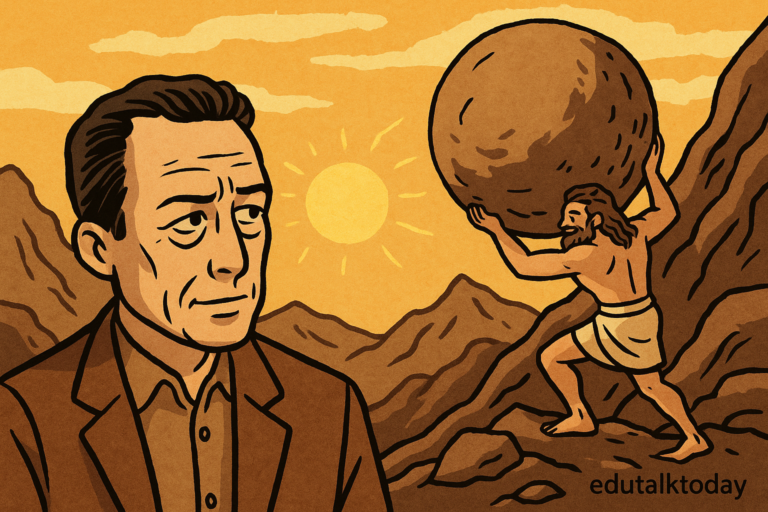Herbert Marcuse’s One-Dimensional Man and the Illusion of Consumer Freedom

Whenever I revisit Herbert Marcuse’s One-Dimensional Man, I’m struck by how relevant his warning about consumer freedom still feels. On the surface, modern societies promise us boundless choice—pick your phone color, customize your coffee order, binge-watch one of thousands of shows. Yet Marcuse flips that promise on its head: what if this “freedom” is actually a highly efficient way to keep us compliant?
He was writing in the 1960s, when America was awash in postwar abundance, but his point cuts deeper than historical context. By turning consumption itself into the center of identity, advanced industrial societies make dissent harder to imagine.
And that’s the kicker—Marcuse doesn’t say we’re simply tricked; he argues our very needs are shaped by systems of domination. For experts like us, that’s a heavy claim worth unpacking: how exactly do societies produce not just what we consume, but what we even want?
How Consumer Society Flattens Our Thinking
False needs vs. true needs
Marcuse’s distinction between “false” and “true” needs is where the fireworks begin. False needs are those manufactured by society—wants that keep us tethered to the system: the upgrade cycle for phones, the compulsive chase for the latest sneakers, or the constant pressure to “stay productive” with new apps. True needs, by contrast, are things that actually lead to human flourishing—autonomy, creativity, genuine community.
But here’s the twist: in advanced industrial societies, false needs don’t just sit alongside true ones—they actively smother them.
Now, this sounds almost too neat. Experts often push back: is Marcuse underestimating the way individuals re-interpret or subvert consumer goods? After all, buying a luxury car could be read as self-expression, not just domination.
But Marcuse’s point is less about the car and more about the system that makes such expression possible only through commodification. That’s a subtle but crucial difference.
Abundance as a tool of control
One of the most unsettling parts of Marcuse’s argument is his claim that material abundance doesn’t liberate us—it integrates us. When society delivers a constant flow of goods, services, and entertainment, it creates gratification loops that reduce our appetite for radical change.
Why revolt if Netflix keeps you entertained, Amazon delivers to your door, and AI tools streamline your workday? The comfort is real, but it’s also disarming.
Think about the Cold War context: the U.S. countered socialist critiques by pointing to supermarkets brimming with goods. Freedom was equated with the ability to choose between 20 brands of cereal.
Marcuse wasn’t impressed. He saw this not as freedom, but as a one-dimensional narrowing of what freedom could mean. Instead of freedom as collective self-determination, it became freedom as market choice.
The neutralization of critique
Here’s where Marcuse gets really provocative: abundance doesn’t just keep people satisfied; it neutralizes opposition. Radical thought, once aimed at transforming society, gets co-opted into harmless subcultures or commodified niches. Take punk music.
Born as a critique of consumerism and conformity, it didn’t take long before corporations were selling ripped jeans and “anarchist” t-shirts at the mall. What started as refusal gets rebranded as lifestyle.
This isn’t just a cultural story. Even political dissent can be absorbed. Consider how environmentalism is reframed as green consumerism: buy a Tesla, switch to bamboo toothbrushes, order carbon-neutral shipping.
Instead of asking hard questions about systemic change, the critique is converted into market options. That’s Marcuse’s nightmare in action.
Technology as ideology
Marcuse uses the term “technological rationality” to describe how efficiency, productivity, and innovation get treated as neutral or inevitable, when in fact they carry deep political weight. Take the example of workplace surveillance tech. On the surface, it’s about optimizing productivity.
But beneath that, it’s about power: who sets the standards for efficiency, who benefits from productivity gains, and who loses autonomy.
Even our smartphones embody this logic. They’re framed as tools of empowerment—you can work from anywhere, connect instantly, access endless knowledge.
But they also tether us to work emails at midnight, expose our behavior to data extraction, and funnel us into algorithmic echo chambers. What looks like liberation often conceals new modes of domination.
The expert challenge
Now, as experts, we’ve all seen critiques of consumer culture before. What makes Marcuse’s version sticky is how he ties it to the very structure of thought. A one-dimensional society doesn’t just constrain what we buy; it constrains what we can even imagine. If alternatives to capitalism, endless growth, or technological progress feel “unrealistic” or “naïve,” that’s one-dimensionality at work.
This is where I think Marcuse deserves a fresh reading. Too often, he’s dismissed as overly deterministic, blind to agency, or stuck in 1960s concerns. But if we look closely, his insight isn’t that people can’t resist—it’s that resistance itself gets quickly absorbed unless it rethinks the very ground of needs and freedom.
Bringing it into the present
Let’s be honest: it’s almost eerie how Marcuse’s analysis holds up in the digital age. Social media gives us endless micro-choices—like, follow, block, mute—but those choices exist inside platforms designed to capture attention and sell ads. Algorithmic personalization makes us feel catered to, but in truth, it’s tightening the loop of one-dimensionality: we see what keeps us engaged, not what expands our imagination.
And think about gig work. Framed as flexibility, it often traps workers in precarious cycles. The illusion of autonomy—pick your hours, be your own boss—covers over the lack of security and the deep structural imbalance of power. Marcuse didn’t live to see Uber, DoorDash, or TikTok, but his framework feels uncannily relevant.
Why this still matters
Here’s the payoff: Marcuse forces us to reconsider the very idea of freedom in consumer societies. If freedom is reduced to choosing between slightly different versions of the same thing, then we’re operating in a severely diminished horizon of possibility. That doesn’t mean there’s no agency, no creativity, no resistance. But it does mean that the system is breathtakingly adept at folding those energies back into itself.
And maybe that’s why experts still find him both frustrating and fascinating. He dares to ask whether we’re mistaking comfort for liberation, and whether abundance itself has become the most sophisticated form of control. It’s a question that feels as urgent in the age of streaming services and digital platforms as it did in the supermarkets of 1964.
How the Illusion of Freedom Works
Mass media saturation
Marcuse was well ahead of his time when he argued that mass media isn’t just about entertainment—it’s about shaping how we see the world. When I look at today’s media landscape, his warning feels spot-on. Advertising isn’t just selling a product anymore—it’s selling an identity. Think about sneaker ads: you’re not buying shoes; you’re buying speed, rebellion, even belonging. Media saturation works by flooding the senses until the ideological messages feel like common sense.
What’s wild is how quickly dissenting voices get folded back into the same machinery. I can’t help but think of how movements like Black Lives Matter are simultaneously calls for systemic change and also branding opportunities for corporations eager to put out a supportive tweet. Marcuse’s point wasn’t that people are duped; it’s that media systems channel even genuine dissent into consumable, market-safe forms. That’s one-dimensionality in action.
Technological rationality
This is one of those concepts that always feels more relevant the more I sit with it. Marcuse argued that technology presents itself as neutral—who could be against efficiency, speed, or convenience?—but in practice, it embodies the priorities of the system that produces it. Take AI recommendation algorithms. They claim to “show us what we want,” but really, they show us what keeps us scrolling. Efficiency here means maximizing ad impressions, not enriching thought.
As experts, we know this isn’t just about consumer apps. Think about industrial agriculture. The push for efficiency—bigger yields, faster growth—has created monocultures that devastate biodiversity. The system tells us this is rational, but rational for whom? Marcuse’s insight is that when “technological rationality” sets the terms of debate, political and ecological questions get disguised as technical ones. Politics disappears into “efficiency.”
Consumer choice as fetish
Marcuse had a brilliant, almost sarcastic take on consumer choice. He pointed out that having endless options doesn’t automatically equal freedom. Freedom to pick between fifty versions of the same soda isn’t the same as freedom to shape the economic and political system that produces those sodas. And yet, society keeps insisting that the former counts as the latter.
I see this all the time in digital culture. Streaming services boast about their massive catalogs: thousands of shows, hundreds of playlists. But these choices don’t alter the fact that your attention is commodified, your tastes are mined for data, and your leisure time is structured around platform engagement. The choice is real but shallow. Marcuse’s claim was that such abundance distracts from asking bigger questions: Why is the system built this way? What alternatives might look like?
Integration of labor and leisure
Marcuse argued that advanced industrial societies erase the boundary between work and leisure, binding both to the same logic of productivity and consumption. Honestly, can anyone today deny how true this feels? Smartphones and remote work tools mean we’re never really “off.” Even our downtime is monetized—scrolling TikTok isn’t relaxation in the classic sense; it’s feeding the attention economy.
And leisure itself often mirrors work. Fitness trackers, language-learning apps, even meditation platforms push us toward measurable productivity. Rest has to prove its worth. Marcuse saw this coming: when leisure is colonized by the logic of work, resistance becomes harder because both spheres reinforce the same system.
Suppression of utopian imagination
Marcuse’s most haunting argument is that advanced societies make radical alternatives feel unthinkable. He calls this “the closing of the universe of discourse.” If you’ve ever heard someone dismiss systemic critiques as “unrealistic,” you’ve seen this in play. Capitalism feels inevitable, technological acceleration feels unstoppable, and collective alternatives feel laughable.
A concrete example? Climate change debates. Proposals for degrowth or radical redistribution are immediately brushed off as politically impossible, even though continuing business as usual is ecologically suicidal. This is the suppression of utopia: the narrowing of our imagination until the only “realistic” future is the one that keeps the system intact.
Why Marcuse Still Matters Today
Digital capitalism as one-dimensional society
It’s honestly uncanny how Marcuse’s framework maps onto digital capitalism. Social media platforms embody his idea of false needs better than any 1960s example. Notifications, likes, and personalized feeds generate compulsive loops of desire and satisfaction, all while extracting data for profit. Users feel empowered—curating profiles, voicing opinions—but the structural dynamics remain intact. The platforms profit, attention is captured, and critical imagination gets narrowed into what the algorithm feeds us.
When people tell me, “Yeah, but we can use social media to organize protests,” I agree—yet Marcuse would point out how quickly those same tools surveil, monetize, or redirect those energies. The medium itself is designed to absorb resistance without fundamentally disrupting its logic.
The gig economy and the illusion of autonomy
Marcuse didn’t live to see Uber or DoorDash, but his critique feels almost written for them. Gig work is sold as freedom: be your own boss, choose your hours. But beneath the rhetoric lies precarious labor, algorithmic control, and zero protections. Workers aren’t free; they’re at the mercy of ratings, surge pricing, and opaque algorithms. The “freedom” to choose when to work conceals the lack of freedom to shape the conditions of work itself.
This is textbook one-dimensionality. A system that structurally disempowers workers manages to present itself as the very opposite—empowerment through choice.
Environmental crisis and false solutions
One place where Marcuse’s relevance really jumps out is in how we approach the climate crisis. Consumer culture offers endless green products: eco-friendly straws, carbon-neutral shipping, electric cars. These are framed as solutions, but they’re really just ways to keep consumption intact. Instead of questioning growth, we’re offered cleaner versions of the same system.
This isn’t trivial. Marcuse’s warning about false needs reminds us that the system produces solutions that reproduce the problem. Buying your way into sustainability still ties ecological action to market logic. The system absorbs critique by turning it into consumption.
Surveillance and personalization
Marcuse’s argument that abundance integrates us feels chilling when applied to surveillance capitalism. Think of how personalization is sold as a benefit: your feed is tailored, your ads are relevant, your recommendations are spot-on. But personalization is also surveillance in disguise. Every click, pause, and scroll is tracked.
Here’s where Marcuse helps us see the ideological trap: surveillance is experienced as convenience, not coercion. That’s the genius of one-dimensional control. People defend the very mechanisms that dominate them because they feel gratified by them.
Reclaiming the Great Refusal
Marcuse ends One-Dimensional Man with a call for what he terms “the Great Refusal”—a collective rejection of the system’s false needs and imposed satisfactions. For experts, this is the toughest nut to crack. What would a Great Refusal look like in the digital age? Quitting platforms en masse? Building cooperative alternatives? Re-centering needs around community and ecology rather than consumption?
These aren’t easy answers, but that’s Marcuse’s challenge: to think beyond the horizons the system sets for us. If freedom is reduced to consumer choice, then reclaiming freedom means redefining what counts as a need, what counts as liberation, and what counts as possible.
Final Thoughts
Marcuse’s One-Dimensional Man still stings because it forces us to ask whether our comforts are binding us more tightly than our hardships ever could. Consumer freedom feels empowering, but when you look closer, it often disguises the deepest forms of control. From streaming platforms to gig apps to green consumerism, the illusion of choice thrives on keeping us satisfied enough not to demand anything more radical.
For those of us who take Marcuse seriously, the task isn’t to deny the pleasures of abundance but to question what those pleasures cost—and whether they keep us from imagining other ways of living. That’s the uncomfortable, exhilarating challenge he leaves us with.





